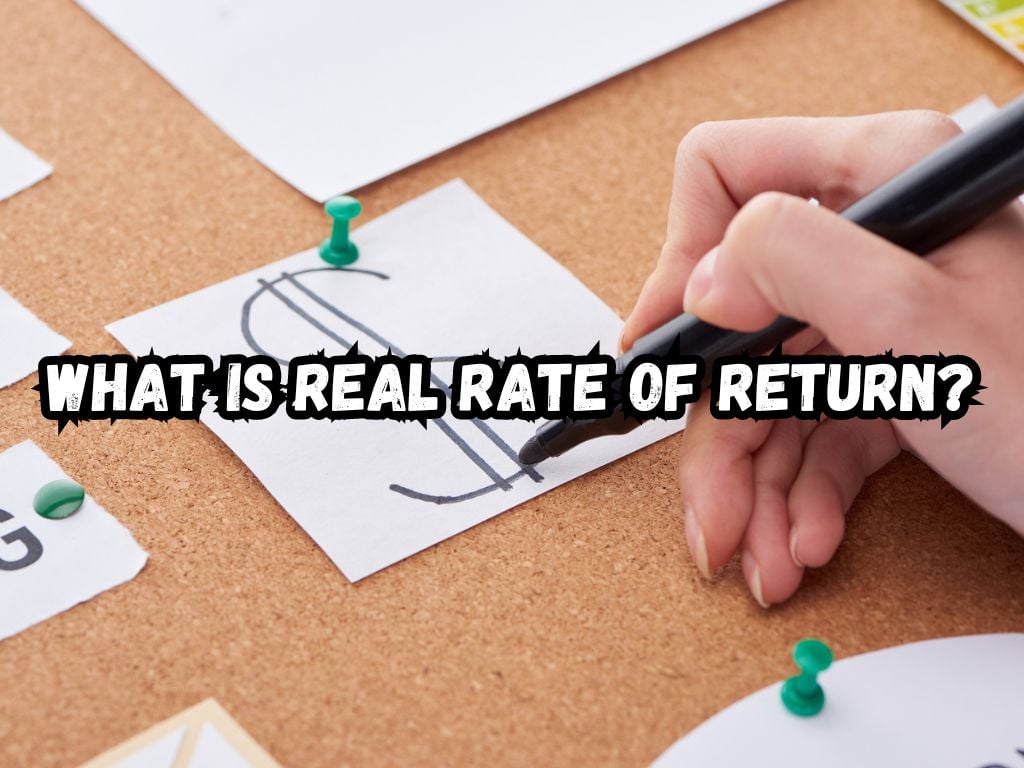Making the most of our investments requires a deeper understanding of the returns. One term that isn’t often understood is the “what is real rate of return”. The real rate of return refers to the annual percentage return realized on an investment.
This rate adjusts for changes due to inflation. In simple terms, it’s the return you gain after inflation.
What is Real Rate of Return?
Before we delve into the real rate, it’s necessary to comprehend the “nominal rate”. This is the percentage rate at face value, influenced by inflation. Let’s say you put your resources into a savings account offering a 5% interest rate. That 5% is your nominal rate of return.
So how does the real rate come into play? Well, it’s pegged on inflation. You could imagine inflation as a monster that eats up your investment gains.
For instance, if the 5% nominal return occurred during a year with a 2% inflation rate, you effectively get a 2.9% real return. The real rate of return pulls back the inflation curtain to expose the earnings you can bank on.
Factors Affecting Real Rate of Return
While inflation is a major player, it’s not the solitary factor influencing the real rate of return. Taxation has an impact. Investment returns are susceptible to various taxes, diminishing the net gain.
Another influencer is the investment fee. These can range from brokerage fees, fund expense ratios, to full-blown advisory costs. The fees reduce your investment returns substantially even before inflation comes into play.
Lastly, time matters. The length of investment can significantly impact the real rate of return. An investment made for a longer period will likely yield a higher return thanks to compounding.

The Importance in Investment Decisions
Here’s why you should care about real rates in your investment choices. Primarily, it brings reality closer. The nominal rate might paint a rosy picture, but the real rate provides the unadulterated truth — the real gain.
Moreover, it plays a useful role when comparing different investments. For example, comparing a bond’s yield to an equity return necessitates adjusting for inflation to ensure a fair comparision.
Lastly, considering real returns is crucial in financial planning. It helps in setting up realistic financial goals and mapping the path to achieving them.
Strategies to Maximize Real Rate of Return
Minimizing taxes can help to boost the real rate of return. Having a tax-efficient investment vehicle may be useful in achieving this.
How about inflation-protected securities like TIPS? TIPS compensate for inflation, hence a more realistic and reliable return.
Portfolio diversification provides exposure to different asset classes, thus offering better chances of higher real returns.
Also, reducing the charges linked to your investment increases your earnings; thus, picking low-fee funds or brokers can be helpful.
Tools and Practical Consideration
Real rate of return calculators are practical tools for investors. They provide the easiest way to determine the actual returns.
However, their accuracy is paramount in being informed of inflation trends. Changes in inflation will invariably affect your investment, calling for regular updates and reviews.

Frequently Asked Questions
What does real rate of return mean?
It’s an annual percentage return adjusted for inflation.
How do you calculate the real rate of return with inflation?
Subtracting the inflation rate from the nominal return rate gets a good estimate.
Can taxes influence my real rate of return?
Yes, taxes reduce the net gain, therefore diminishing the real rate of return.
Conclusion
The real rate of return imparts practical insight into your investment gain, cutting through the illusion of inflated nominal returns. It’s crucial for smarter investment decisions and long-term financial planning.


 Tags:
Tags:










